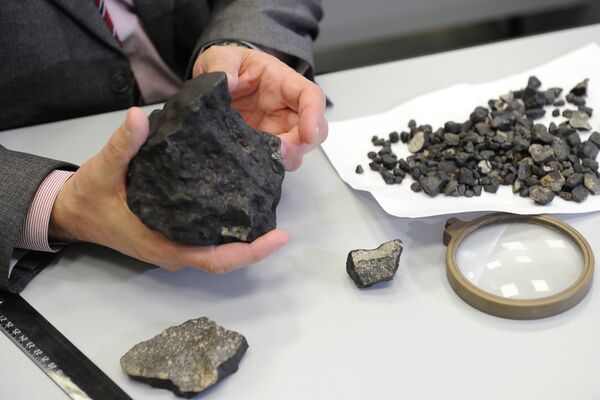MOSCOW, March 14 (RIA Novosti) - The meteorite that entered Earth’s atmosphere and slammed into Russia’s Urals last month had broken off from a large asteroid and collided with another space body several million years ago, a Russian scientist said on Thursday.
“It was formed within an asteroid, separated from it, and then, tens of millions of years ago, it suffered a collision, receiving multiple cracks as a result,” said Erik Galimov, director of the Russian Academy of Sciences Vernadsky Institute of Geochemistry and Analytical Chemistry.
“It was because of the large number of cracks that it exploded so powerfully.”
The meteorite entered the atmosphere undetected by existing space-monitoring systems and slammed into the Urals on February 15, causing a massive sonic boom that blew out windows and damaged thousands of buildings around the city of Chelyabinsk, injuring over 1,500.
NASA estimated the meteorite was roughly 50 feet (15 meters) in diameter when it entered the atmosphere, travelling many times the speed of sound, and exploded into a fireball brighter than the sun.
Some Russian scientists suggested that if the Chelyabinsk meteorite had entered the atmosphere at a steeper trajectory, the consequences would have been far worse.

